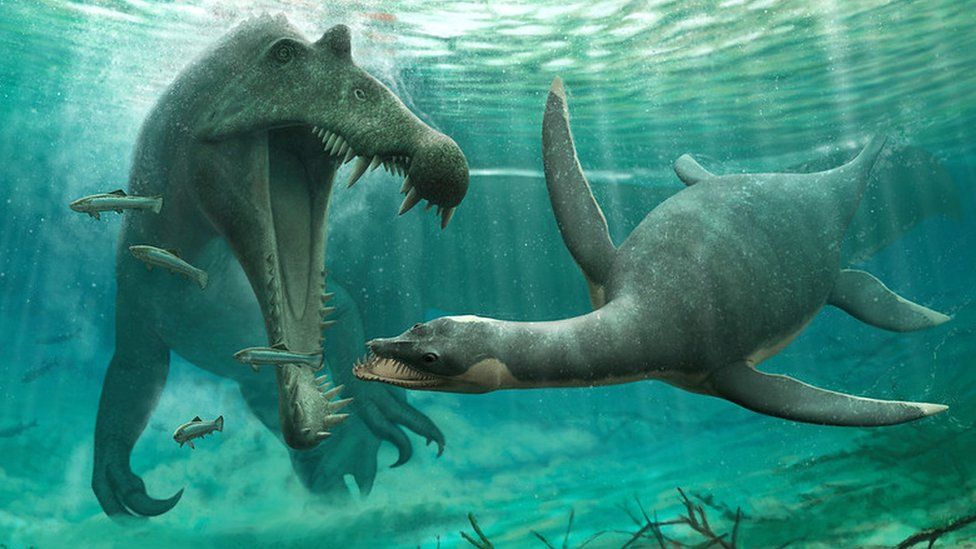Is the Loch Ness Monster real? Existence 'plausible' after plesiosaur discovery
- Published

We've all heard the tales of Nessie, a long-necked creature living in the deep waters of Loch Ness in Scotland.
People from all around the world visit the loch in the hope of spotting the famous creature, which was first 'sighted' exactly 90 years ago by a lady called Aldie Mackay while she was travelling to her home in Drumnadrochit.
Until now most people have agreed it's a fun story but perhaps no more than that.
But now, scientists have said the existence of the Loch Ness Monster is 'plausible'!
It's after fossils were found that suggest some species of plesiosaur, traditionally thought to be sea creatures, may have lived in freshwater.
Some people believe that the mythical Loch Ness Monster is a plesiosaur, a reptile with a small head and a long neck that became extinct some 65.5 million years ago.
One of the reasons this was previously rejected is because plesiosaurs need saltwater so wouldn't live in Loch Ness, a freshwater loch or lake.
Now fossils of small plesiosaurs have been found in a 100 million-year-old river system that is now Morocco's Sahara Desert.
The discovery suggests some plesiosaur may have lived in freshwater and even inland.
The story of palaeontologist Mary Anning - told in a beautiful sand animation.
Plesiosaurs, first found in 1823 by fossil hunterMary Anning, were prehistoric reptiles with small heads, long necks, and four long flippers.
They inspired reconstructions of the Loch Ness Monster, but unlike the monster, plesiosaurs were thought to live in the sea.
Scientists from the University of Bath and University of Portsmouth in the UK, and Université Hassan II in Morocco found the fossils.
They also found teeth which gave clues as to what the plesiosaurs were eating.
A plesiosaur tooth from the rive bed of Morocco
The teeth have heavy wear which seem to show that the plesiosaurs were chipping their teeth on armoured fish that live in the rivers.
Dr Longrich, from the project, said: "We don't really know why the plesiosaurs are in freshwater."
A press release from the University of Bath said the new discovery showed that the Loch Ness Monster was "on one level, plausible".
However, it still doesn't give a huge amount of evidence that the actual Loch Ness Monster existed.
- Published22 February 2022
- Published3 June 2019
